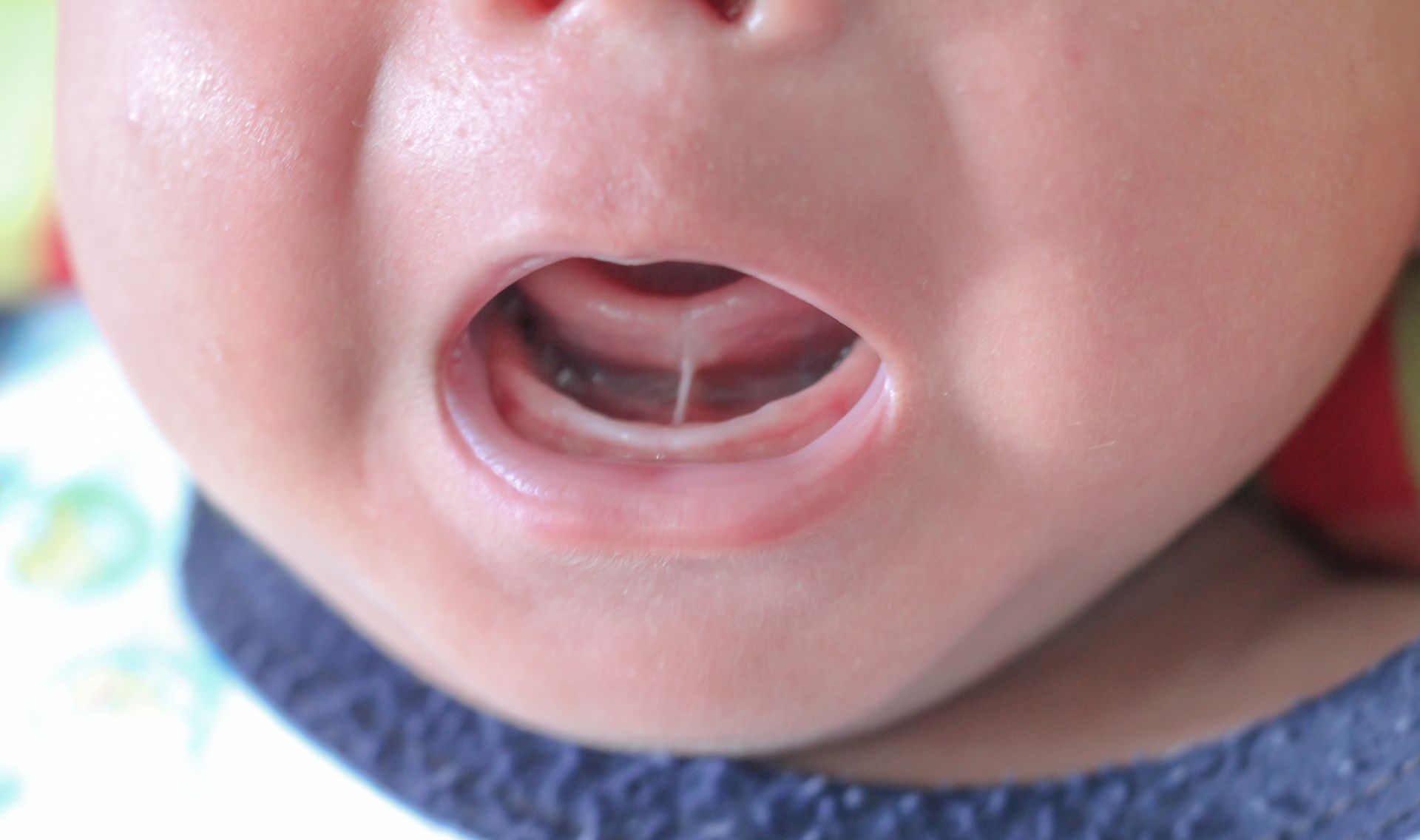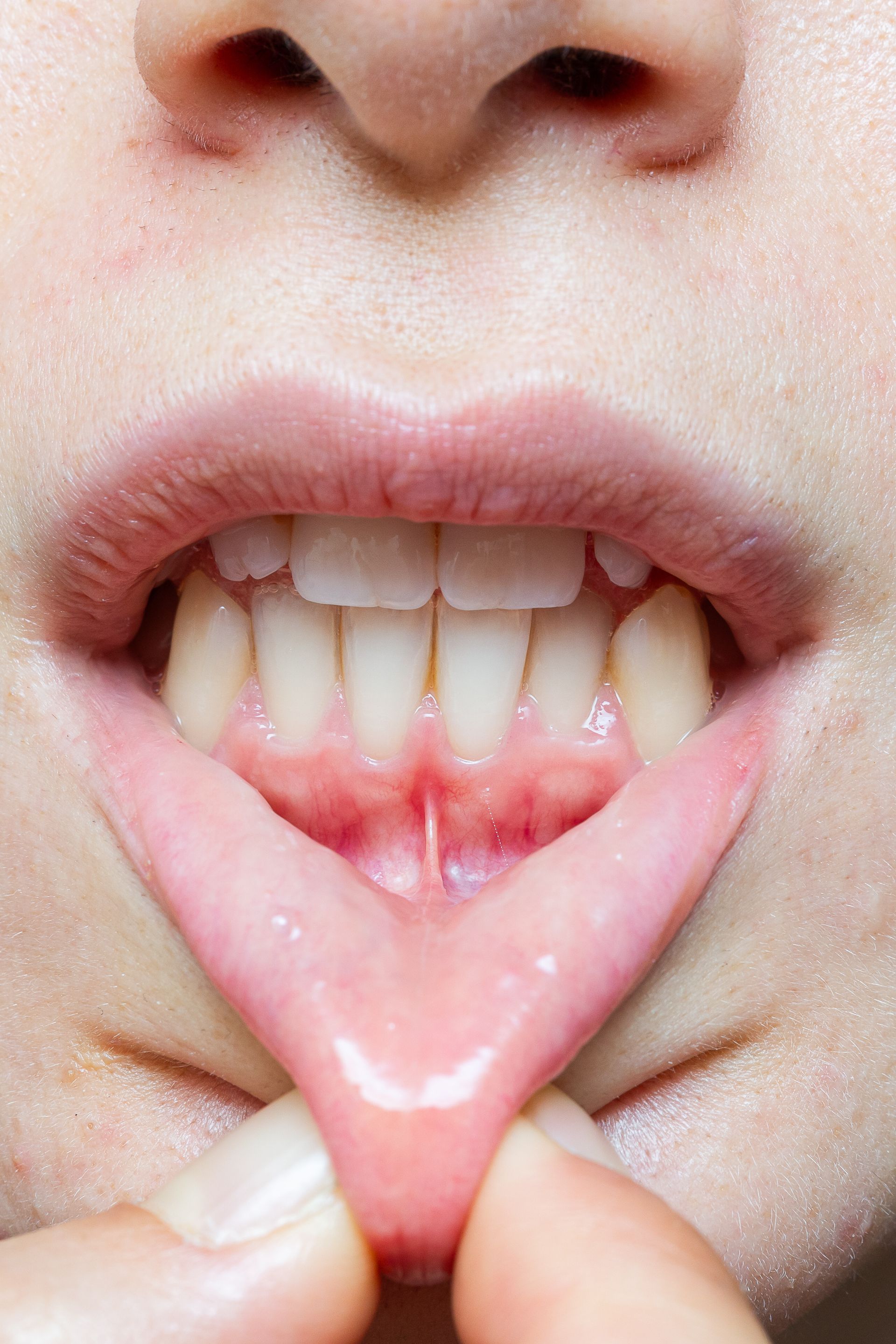Specialized Provider in Myofunctional Therapy & Pre/Post Frenectomy Therapy
What is a Tongue Tie also known as (Ankyloglossia)?
A congenital condition (meaning it is present at birth and develops during fetal formation when the tongue fails to separate fully from the floor of the mouth) where an unusually short, thick, or tight band of tissue (the lingual frenulum) tethers the bottom of the tongue to the floor of the mouth, restricting the tongue normal range of motion or movement.
Tongue Tie location can be classified as
- Anterior tie has the frenulum attached closer to the tip of the tongue, is usually visible, and can impact speech and feeding.
- Posterior tie is located further back under the tongue, is less visible, and often requires a manual examination to diagnose; it can affect latching, swallowing, and other functions.
Restrictions can be lingual (tongue), labial (lip), or buccal (cheek) and can affect the mobility of the tongue lips, or cheeks, interfering with
- Nasal breathing
- Chewing and feeding
- Swallowing
- Speech articulation
- Sleep and airway stability
- Jaw and facial development
This restriction can cause problems with feeding, speech, swallowing, and breathing. In children, it can affect facial and dental development. In adults, it can contribute to headaches, jaw pain, and poor sleep. An oral restriction is not always visible or obvious.
And not all frenulums are functionally restrictive. Severity can range from mild restriction to complete immobility. If not treated this can disrupt orofacial development, resulting in issues with speech, feeding, airway health, and craniofacial growth. And as a child develops, untreated restrictions may impact airway and jaw development, increasing the risk of sleep-disordered breathing and other medical and health issues.
Impacts of a Tongue Tie in Infants
Tongue Tie often presents itself during breastfeeding or bottle-feeding encompassing:
- Poor latch
- Clicking or leaking milk during feeds
- Inadequate weight gain
- Gagging, choking, or reflux
- Excessive gassiness or colic
- Maternal nipple pain or damage
Impacts of Tongue Tie in Children and Early Adolescents
Tongue Tie can contribute to:
- Speech delays or articulation issues
- Mouth breathing and snoring
- Dental crowding and malocclusion
- Orthodontic relapse after braces
- Persistent oral habits (e.g., thumb sucking, open mouth posture)
- Difficulty eating or swallowing certain textures.
- Picky Eating or Feeding Aversions
- Tongue thrust or improper swallowing patterns
- Interrupted sleep or daytime fatigue
Impacts of Tongue Tie in an Adults
Symptoms can include:
- Obstructive sleep apnea (OSA)
- Bruxism (teeth grinding)
- TMJ pain or jaw tightness
- Difficulty swallowing pills or dry foods
- Neck tension, poor posture, or upper back pain
- Migraines and chronic headaches
- Speech difficulties or fatigue when speaking
- Poor sleep quality or mouth breathing at night
Other Restrictions Include:
Buccal Tie or Cheek Tie, is a condition where a tight band of tissue (frenum) connects the inside of the cheek to the gums, restricting cheek movement.
Labial (Lip) Ties, is a congenital condition where a tight band of tissue (frenum) connects the inside of the cheek to the gums, restricting cheek movement
Treatment for Tongue Tie
- Frenotomy or frenuloplasty, surgically releases the tissue performed with laser or surgical instruments, however, releasing doesn’t guarantee restored function thus, Myofunctional Therapy should also be implemented
- Myofunctional Therapy before and after any tongue tie release procedure is imperative to help prevent incomplete healing, scar tissue formation, or return of dysfunction. Myofunctional Therapy will help retrain the system.




